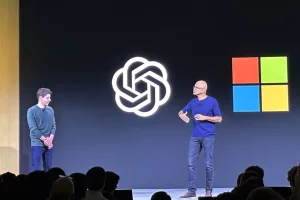Apple Unveils A17 Pro, Its Most Powerful Mobile Chip Yet
Apple debuted its first “Pro” chip at its annual fall event today. The A17 Pro is the company’s most powerful mobile silicon yet, and it’s likely to power the next-generation iPhone 15 Pro.
The A17 Pro is built on a 3-nanometer manufacturing process, which is a significant advancement over the 5-nanometer process used in the A16 Bionic chip. This allows the A17 Pro to be smaller, more efficient, and more powerful.
The A17 Pro features a six-core CPU with two performance cores and four efficiency cores. Apple claims that the performance cores are 10% faster than the A16 Bionic, while the efficiency cores are three times more efficient per watt. The A17 Pro also has a six-core GPU, which is 20% faster than the A16 Bionic.
One of the most exciting new features of the A17 Pro is its support for hardware-accelerated ray tracing. Ray tracing is a graphics technique that simulates the way light travels in the real world, resulting in more realistic and immersive graphics. Ray tracing is already used in many high-end PC and console games, and now it’s coming to mobile devices with the A17 Pro.
The A17 Pro also features a number of other improvements, such as a new image signal processor (ISP) for better photography and videography, a new neural engine for machine learning, and a new display engine for more efficient power usage.
Overall, the A17 Pro is a major upgrade over the A16 Bionic chip. It’s faster, more efficient, and has more advanced features. It’s also the first mobile chip to support hardware-accelerated ray tracing.
Why is Apple calling this the A17 Pro?
It’s unclear why Apple is calling this the A17 Pro. It’s possible that the company is planning to release a stripped-down version of this chip in next year’s iPhone 16. Or, it could simply be a marketing move to differentiate the A17 Pro from other mobile chips.
What does this mean for the future of mobile gaming?
The A17 Pro’s support for hardware-accelerated ray tracing is a major development for mobile gaming. Ray tracing can produce more realistic and immersive graphics, and it’s already being used in many high-end PC and console games. With the A17 Pro, game developers will be able to bring the same level of graphical fidelity to mobile devices.
This means that we can expect to see even more impressive-looking mobile games in the future. Games like Resident Evil 4 and Resident Evil Village are already coming to the iPhone, and we can expect to see many more AAA games make their way to mobile devices with the A17 Pro.
Overall, the A17 Pro is a very impressive chip. It’s the fastest and most powerful mobile chip ever made, and it has the potential to revolutionize mobile gaming.




